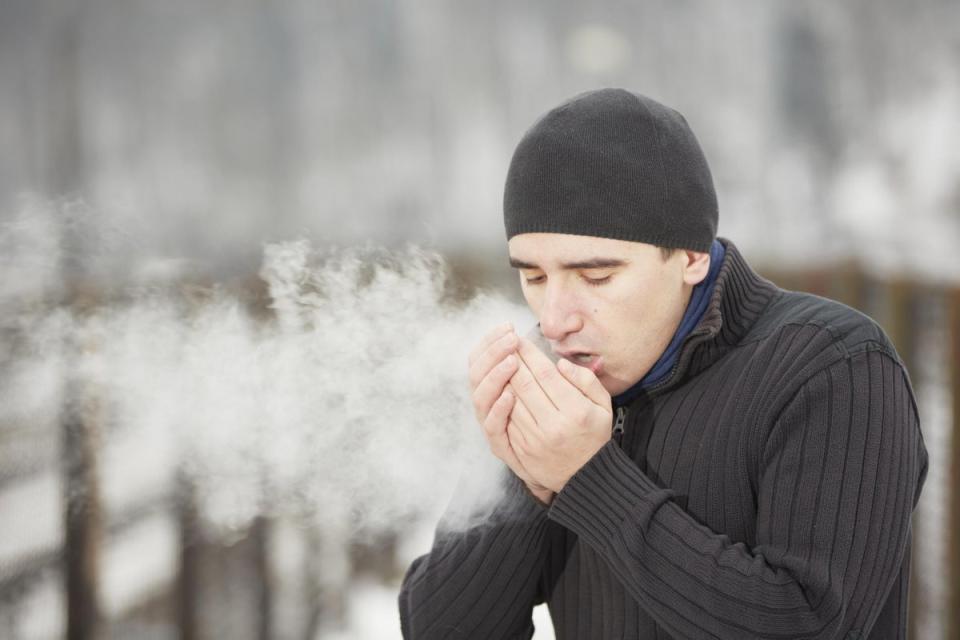How to spot hypothermia symptoms and the best way to deal with it

Ready your bobble hats, pick up a new puffer, and stow away the deckchairs: a chill wind is blowing through the nation.
By mid-November the average temperature has dropped by around 11C since high-summer, and it’s only going to get worse.
In some parts of the UK and Ireland, winter has arrived early, moved into the spare room, and made itself a cup of cold cocoa.
The cold brings with it seasonal dangers: ‘excess winter mortality’ as it is known, accounts for around a 20 per cent rise in fatalities between December and March.
A lot of these aren’t from cold-related maladies, but even in highly developed countries with well-heated homes and public services, many die of hypothermia every winter.
So, here’s your one-stop guide to the symptoms of hypothermia, how to spot it in others, and what to do if you suspect a loved one might have it…
Prevention is better than cure
Put simply, hypothermia occurs when people get too cold. If your body begins to lose heat more quickly than it can generate it, then your internal temperature starts to sink. If it drops below 35C (from a norm of 37C), then you’re likely in trouble.
Particularly at risk are the elderly, babies, drug users and the physically unfit – anyone whose body loses heat at a higher-than-average rate.
And the most at risk group: anyone who has fallen into cold water. A cold dip followed by cold clothes is a potentially lethal combination – get them inside, dry, and re-clothe them as quickly as possible.
How to spot it
Hypothermia comes with a variety of potential symptoms – from the seemingly innocuous to the clearly catastrophic.
A Walk through Winter Wonderland by Alan Schaller and Sara Shevlin











Mild hypothermia (32-35C) can manifest with symptoms like shivering, shallow breathing and clumsiness, as well as more distinct symptoms like slurred speech, confusion, and a weak pulse.
Hypothermia sets in gradually and sufferers probably won’t be aware of their condition, so in potentially dangerous situations you should keep half an eye on your company. In severe cases (when the body drops below 32C), the afflicted may lose consciousness altogether. Call 999 immediately.
What to do (and what not to)
Hypothermia patients will be best served by the emergency services, but there are plenty of things you can do before they arrive.
You need to warm up your subject – but gradually. Perhaps strangely, shock treatments like hot baths or lying limbs on radiators are to be avoided, as in severe cases the sudden temperature change can induce cardiac arrest.
Get them out of the elements – any sort of shelter is a good start – and pile on as many blankets as you can find. Once they resemble E.T on the front of his bicycle, a warm cup of hot chocolate is a good next move.
And under no circumstances listen to your grandmother when she recommends a shot of brandy or rum. Alcohol makes you feel warm by drawing heat away from your core – not what the doctor ordered for someone suffering from excess cold.

